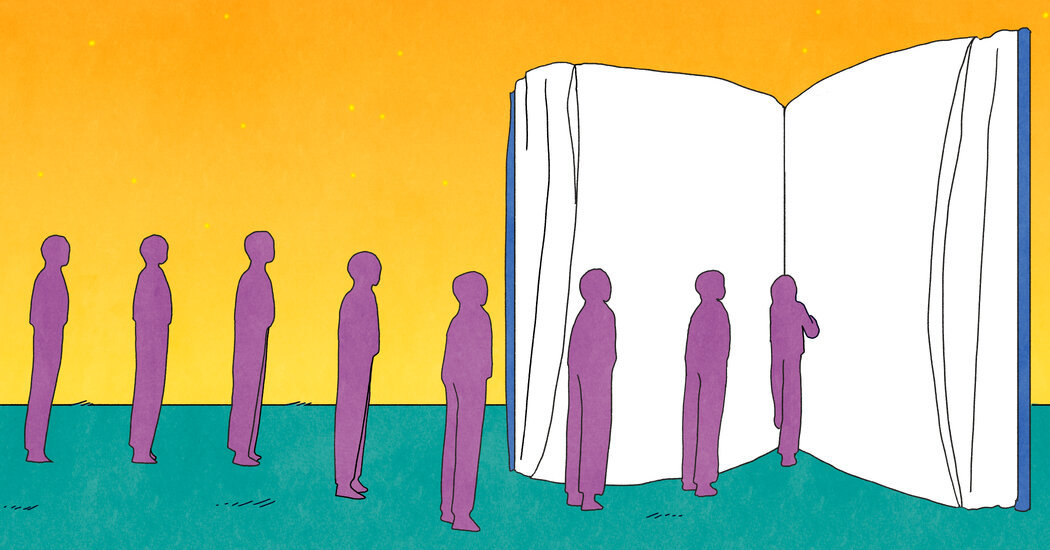Robert F. Kennedy Jr., secretary of health and human services, is correct that reported autism rates have exploded in the last 30 years — they’ve increased roughly 60-fold — but he is dead wrong about the causes. I should know, because I am partly responsible for the explosion in rates.
The rapid rise in autism cases is not because of vaccines or environmental toxins, but rather is the result of changes in the way that autism is defined and assessed — changes that I helped put into place.
In the late 1980s and early 1990s, I chaired the task force charged with creating the fourth edition of the Diagnostic and Statistical Manual of Mental Disorders, or the D.S.M.-IV. Sometimes called the “bible of psychiatry,” the D.S.M. influences medical practice, insurance coverage, education and treatment selection.
In the third edition of the D.S.M., published in 1980, autism was tightly defined and considered extremely rare. Criteria for the diagnosis required a very early onset (before age 3) of severe cognitive, interpersonal, emotional and behavioral problems.
But my task force approved the inclusion of the new diagnosis, Asperger’s disorder, which is much milder in severity than classic autism and much more common. In doing so, we were responding to child psychiatrists’ and pediatricians’ concerns for children who did not meet the extremely stringent criteria for classic autism, but had similar symptoms in milder form and might benefit from services.
Based on careful studies, our task force predicted that the addition of Asperger’s disorder would modestly increase the rate of children given an autism-related diagnosis. Instead, the rate increased more than 16-fold, to one in 150 from an estimated one in 2,500 in the span of a decade. It has been climbing more gradually ever since and is one in 31 today. Our intentions were good, but we underestimated the enormous unintended consequences of adding the new diagnosis.
The resulting explosion in cases included many instances of overdiagnosis — children were labeled with a serious condition for challenges that would better be viewed as a variation of normal. It also sowed the seeds of conspiracy theories and anti-vaccine beliefs as people wondered how to explain the rising cases.
Many large studies have come to the same conclusion: Vaccines don’t cause autism. The role, if any, of environmental toxins is still to be determined, but there is no known environmental factor that can explain the sudden jump in diagnoses. The changes we made to the diagnosis in the D.S.M.-IV can.
Why did autism-related diagnoses explode so far beyond what our task force had predicted? Two reasons. First, many school systems provide much more intensive services to children with the diagnosis of autism. While these services are extremely important for many children, whenever having a diagnosis carries a benefit, it will be overused. Second, overdiagnosis can happen whenever there’s a blurry line between normal behavior and disorder, or when symptoms overlap with other conditions. Classic severe autism had so tight a definition it was hard to confuse it with anything else; Asperger’s was easily confused with other mental disorders or with normal social avoidance and eccentricity. (We also, regrettably, named the condition after Hans Asperger, one of the first people to describe it, not realizing until later that he had collaborated with the Nazis.)
In 2013, the next edition of the diagnostic and statistical manual, the D.S.M.-V, eliminated Asperger’s disorder as a stand-alone diagnosis and folded it into the newly introduced concept of autism spectrum disorder. This change further increased the rate of autism by obscuring the already fuzzy boundary between autism and social awkwardness.
It is difficult to accurately diagnose autism spectrum disorder. There is no biological test; symptoms vary greatly in nature and severity; clinicians don’t always agree; different diagnostic tests may come up with different conclusions; and the diagnosis is not always stable over time, meaning that many people diagnosed as children no longer meet criteria for diagnosis if evaluated later as adolescents or adults. Diagnostic inaccuracy contributes to falsely elevated rates, which can lead to misconceptions that an “epidemic” is occurring.
Social networking has also been a powerful force in increasing autism diagnoses. While online communities can provide valuable information, support, social interactions, validation, resources and even dating opportunities, they can also promote inaccurate self-diagnosis. This is especially true as more and more people with mild symptoms get labeled autistic. As it has lost its dire connotations, some people turn to the diagnosis as a way to feel less shame and guilt around social awkwardness or difficulties in juggling tasks.
Of course, there are many people for whom expanded diagnostic criteria for autism and greater awareness have been helpful in providing much-needed treatment and school services. A positive result has been identifying people who would have been missed before or misdiagnosed as having another mental disorder.
Still, we should be concerned about the increasing tendency to mislabel socially awkward behavior as autistic. A diagnosis of autism can shape both external perception (how others respond to you) and internal (how it affects your self-esteem, behavior and expectations). Diagnoses, especially in children, should be written in pencil, not engraved in stone or rendered eternal in medical records. A false diagnosis of autism can haunt someone for life and be very difficult to remove from medical records. Overdiagnosing autism also often misallocates very scarce resources away from the more severely impaired people who most need them.
The history of psychiatry is full of diagnoses, like multiple personality disorder or adult attention deficit/hyperactivity disorder, that seem to be used to explain all sorts of mental distress and disability and quickly take off in popularity. I worry that clinicians and parents are sometimes too quick to embrace an autism spectrum diagnosis.
The explosion in autism rates has become fodder for Mr. Kennedy’s conspiracy theories. He has redirected federal research efforts away from the real science that could elucidate the causes of autism. He has instead hired David Geier, a longtime vaccine skeptic, who is reportedly seeking access to public health databases to hunt for a link between vaccines and autism. Mr. Kennedy also recently fired all 17 members of the Centers for Disease Control and Prevention committee that advises on vaccine safety and efficacy. Among their replacements is a doctor who has called the term anti-vaxxer “high praise” and a nurse who serves on the board of an organization that has linked childhood vaccines to autism.
Mr. Kennedy’s statements that people suffering from autism don’t pay taxes, implying they are useless, has created outrage among patients and families. His proposed autism registry is a scary invasion of privacy.
Figuring out how to accurately diagnose and appropriately treat autism is incredibly hard and the source of many fraught conversations among researchers, clinicians, people who have autism and their families. We need a health secretary with the good judgment to judiciously help us navigate these thorny questions and properly allocate scarce research resources. Instead, we have Mr. Kennedy, who has only served to sow confusion with false promises, to trigger anger with disparaging comments and to replace funding for real science with wasteful false science.
Allen Frances is a psychiatrist. He chaired the American Psychiatric Association’s task force charged with creating the fourth edition of the Diagnostic and Statistical Manual of Mental Disorders.
The Times is committed to publishing a diversity of letters to the editor. We’d like to hear what you think about this or any of our articles. Here are some tips. And here’s our email: [email protected].
Follow the New York Times Opinion section on Facebook, Instagram, TikTok, Bluesky, WhatsApp and Threads.
The post Autism Rates Have Increased 60-Fold. I Played a Role in That. appeared first on New York Times.




